Rubber Ramps
Enhancing Doorway Accessibility with Rubber Threshold Ramps
If you or someone you care about faces mobility challenges, you’re likely familiar with the difficulties of navigating doorways. Even a small height difference at an entrance or a minor step down to an outdoor area can become a source of frustration or even pose safety risks.
For the sake of safety and convenience, the experts at VIP Access frequently recommend the use of rubber threshold ramps to create a smooth incline instead of encountering a sudden obstacle. Our Rubber Ramps are developed for ease of access through doorways and entrances into shower recesses. Our rubber ramps and wedges have superior stability and are slip-resistant, reducing the risk of trips and falls.
The rubber texture is very comfortable for wheels and feet alike and are suitable for indoor and outdoor use.
Why Consider a Rubber Threshold Ramp?
Rubber threshold ramps are designed to bridge the gap between ground level and thresholds, raised platforms, small curbs, and other minor steps found in walkways. They serve a valuable purpose in locations where a full-scale wheelchair ramp is unnecessary, such as the entrance to a walk-in shower or a single step leading to a patio. Additionally:
Material Benefits: Rubber threshold ramps offer distinct advantages over their aluminium counterparts, including resistance to rust and corrosion.
Surface Compatibility: These ramps naturally conform to the surface they are placed on, ensuring a secure fit on various surfaces like wood, cement, carpet, and more.
Eco-Friendly: Our rubber threshold ramps are crafted from recycled tires, providing cost savings while contributing to environmental conservation.
Slip Resistance: Rubber ramps offer inherent slip resistance, enhancing safety.
Easy Customisation: Rubber ramps can be easily cut to accommodate corners or irregularly shaped steps. And can be made to custom requirements.
Portability: Since they are freestanding, rubber threshold ramps are simple to install and can be relocated as needed.
Are There Any Drawbacks to Rubber Threshold Ramps?
While rubber threshold ramps offer numerous benefits, there are a few scenarios where they may not be the optimal choice:
Incompatibility with Sliding Glass Doors: Rubber ramps are not suitable for sliding glass doors as they do not cover the door’s tracks. Aluminium threshold ramps are designed for this purpose.
Weight Considerations: Larger rubber ramps can be heavy and challenging to move.
Securing Your Ramp in Place
For added stability and safety, it’s advisable to use an adhesive sealant to keep the rubber ramp securely in position.
Maintenance Tips for Your Rubber Threshold Ramp
Maintaining these ramps is straightforward. Keep your ramp clean by gently washing it with warm water and mild detergent. Avoid harsh scrub brushes and strong soaps, as these can prematurely wear down the ramp.
Selecting the Right Size Ramp for Your Home
With standard and custom sizing available, these ramps can be tailored to suit any environment and are especially ideal for doorways, entrance doors, raised areas and suitable for shower recesses.
We supply and install custom sized ramps depending on each unique requirement. Our Standard Size Ramps are 900mm Wide and range from 10mm high to 190mm high. In Australia, a recommended grade is 1:10, indicating a slope of fewer than 10 degrees. Additionally, ensure that the ramp’s top fits smoothly against the edge of the last step.
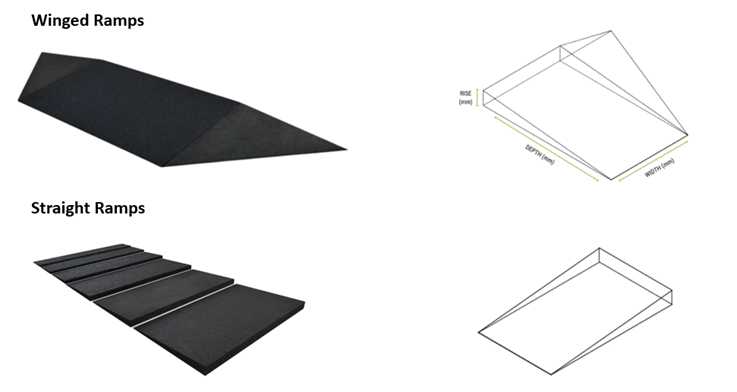
Installing a threshold ramp can be a challenge for many, as different ramp sizes vary in weight. Consider consulting a professional for a safer and more efficient installation process.
Ensuring safe accessibility for you and your loved ones is a shared priority. If you have questions or need information about our services and products, please don’t hesitate to reach out to us. Our experienced staff is ready to provide the guidance you need to proceed with your accessibility modifications.
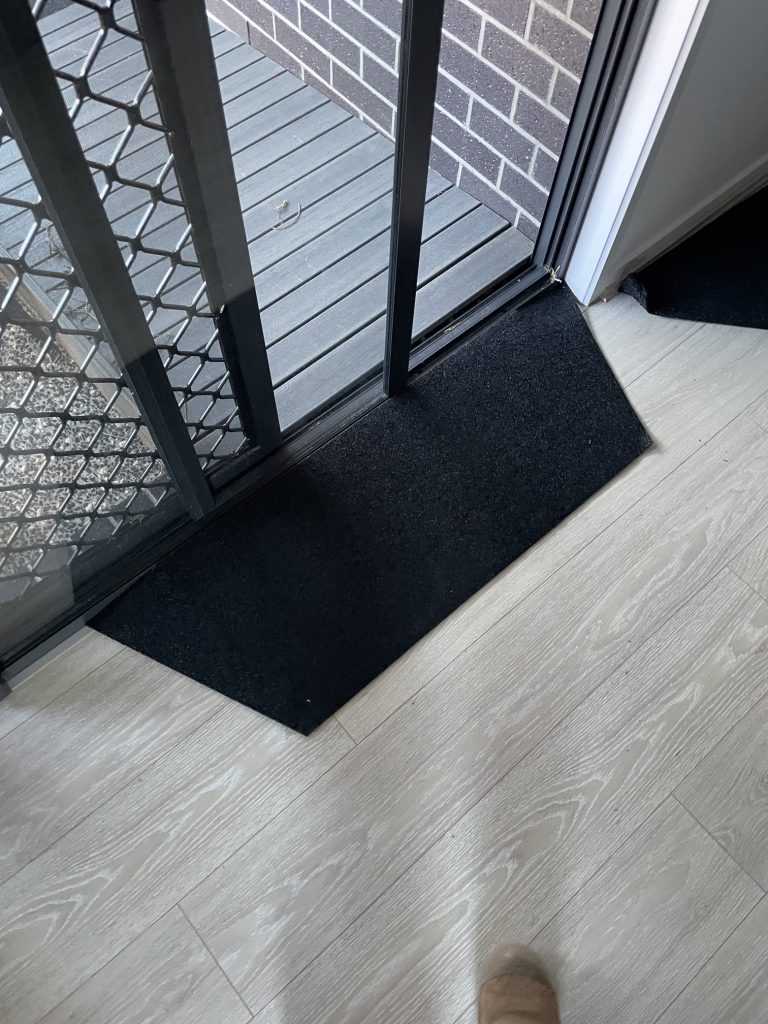
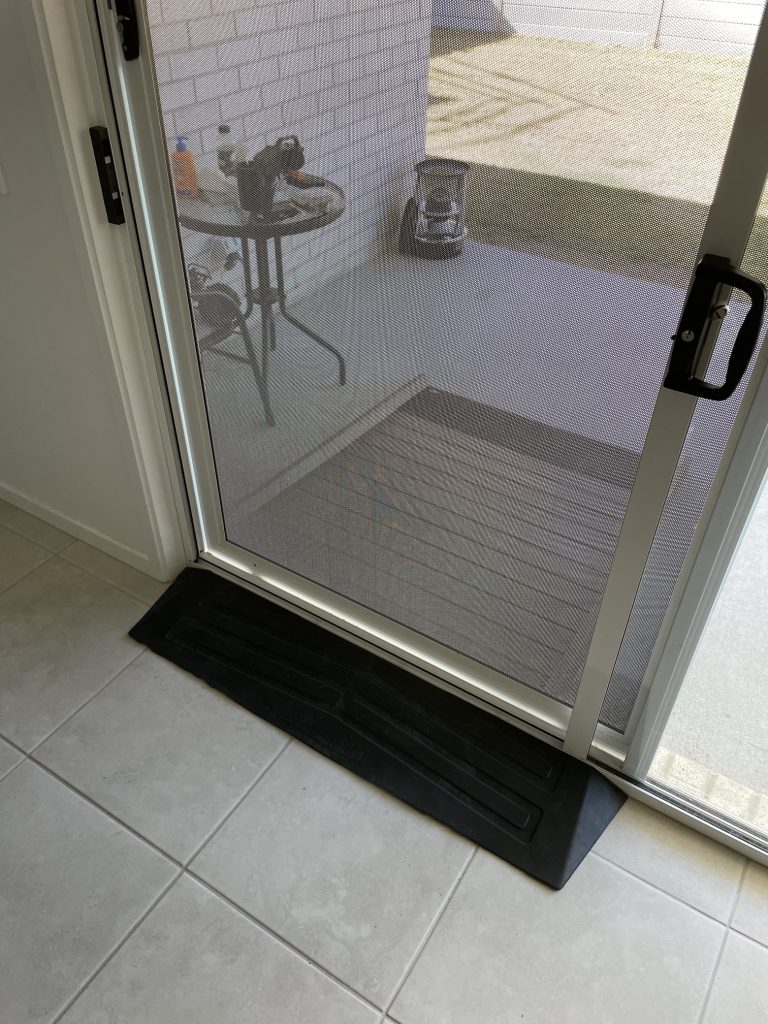
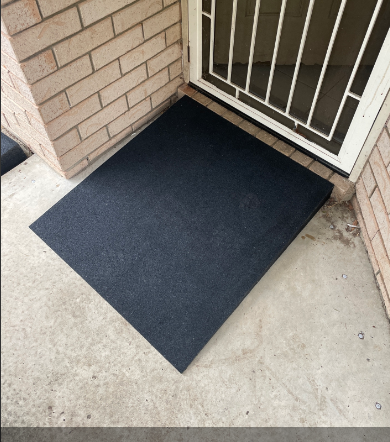
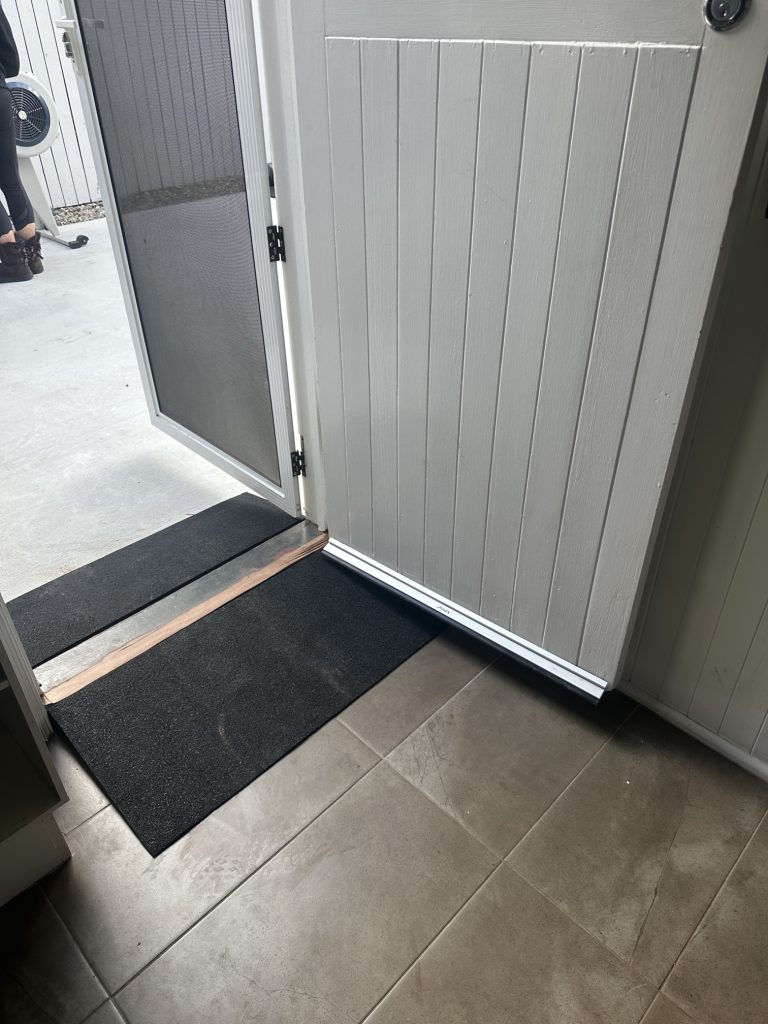
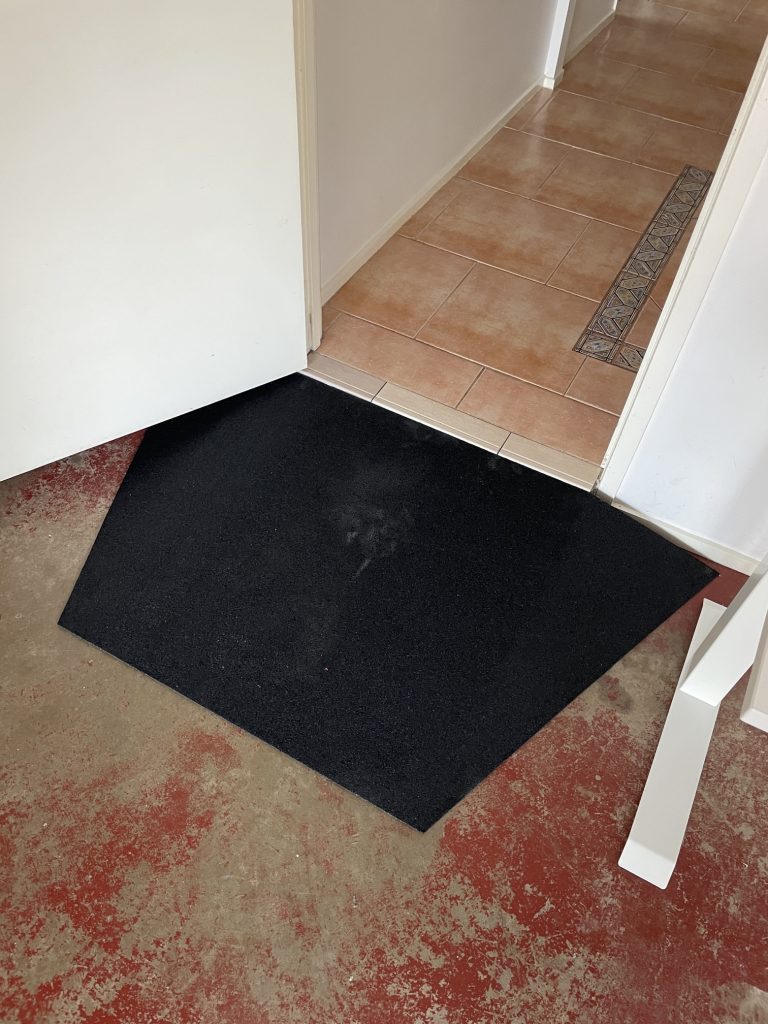
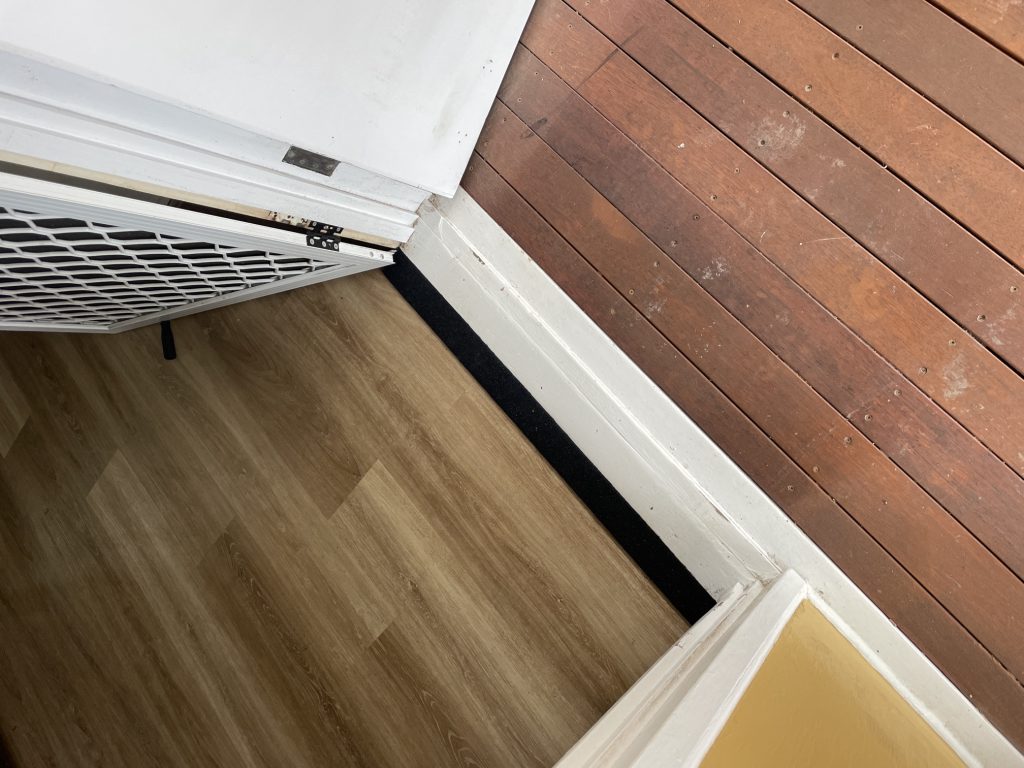
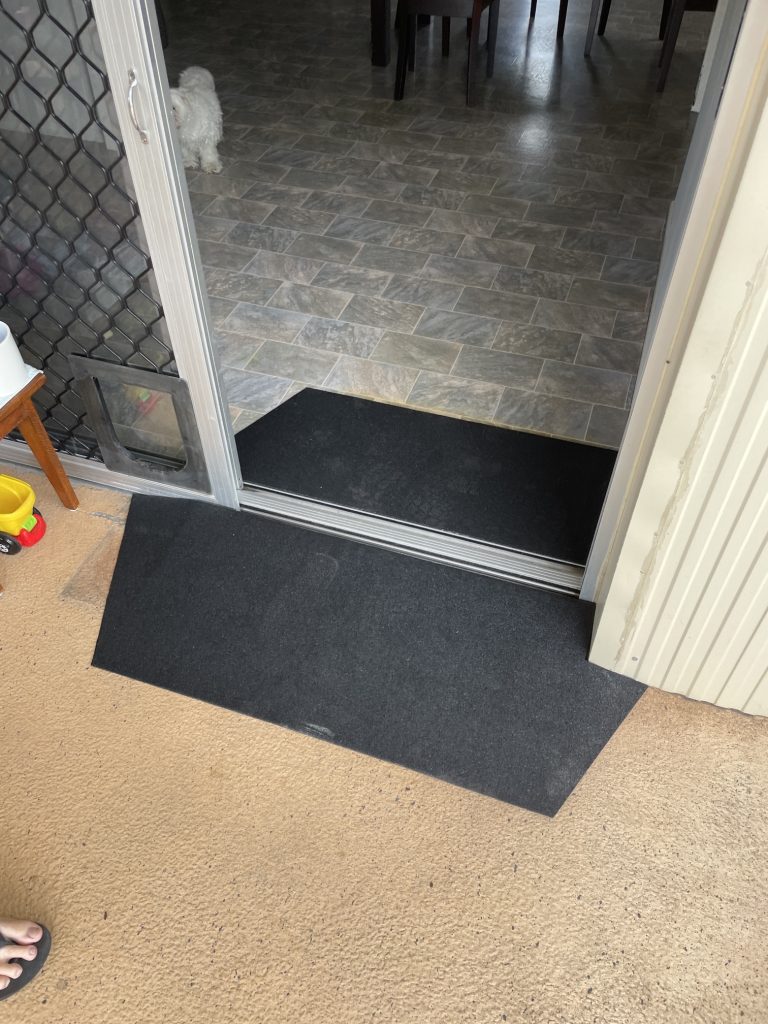
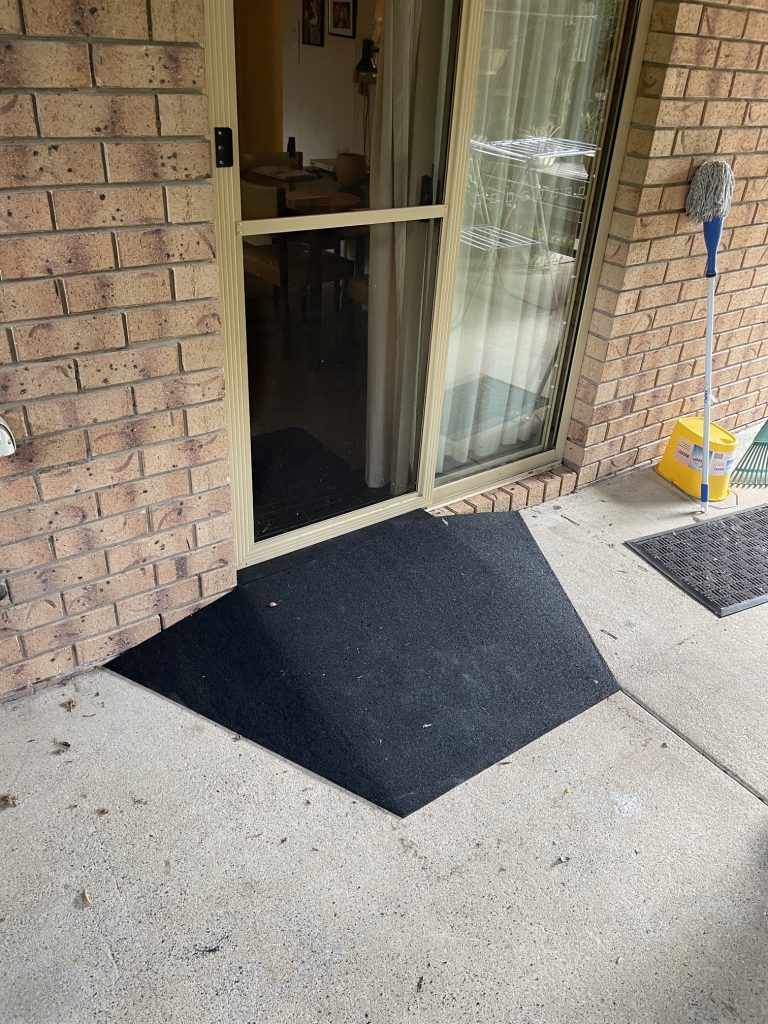
How to Measure for Rubber Ramps and Thresholds
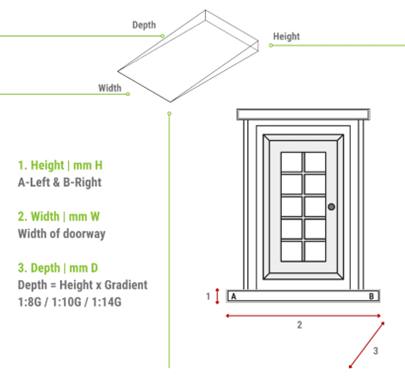
How to provide Measurements for Rubber Ramps
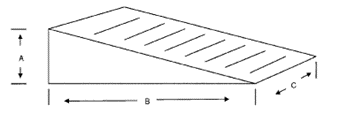
A = _______ mm (height of wedge)
B = _______ mm (length of wedge)
C = _______ mm (width of wedge)
Is Kerbing required? If so, advise which side/s and height.
Is splay/s required? If so, advise which side/s.
Fix Ramp to ground? Yes / No
Non-slip tread required Yes / No
Floor Base? _____________
